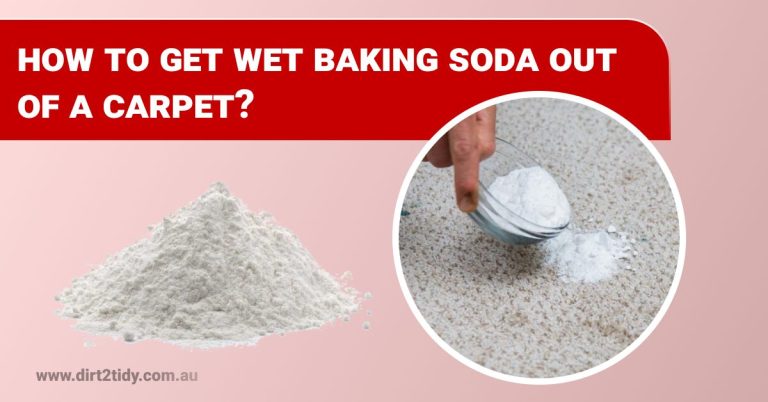Table of Contents
Clay stains whether from a messy art project, gardening in the yard, or playful kids can be some of the toughest spots to tackle. Unlike ordinary dirt, clay is dense, sticky, and prone to embedding itself deeply into fabrics, upholstery, and even carpet fibers. Left untreated, these stains can dry, harden, and become even more difficult to remove, sometimes leaving lasting marks.
Fortunately, with the right approach and techniques, even the most stubborn clay stains can be lifted effectively. From pre-treatment methods that loosen the clay to careful washing or cleaning strategies that protect your surfaces, these tips and tricks will help restore your clothing, furniture, and carpets to their clean, stain-free state.
Whether you’re dealing with a fresh spill or a set-in mark, understanding the right methods can save time, effort, and frustration ensuring your home stays spotless despite life’s little messy moments.
Clay streaks on clothing
Ouch! Your child’s art smock missed a clay stain on their shirt. Try these clay stain removal ideas before tossing the clothing.
- Spoon off leftover clay from cloth (be sure to run the spoon down the weave of the fabric – not across the stained area).
- Stir together 1 cup white vinegar and 3 teaspoons iodized salt. Soak a cloth in vinegar and salt and apply it to the clay stain. Soak garments until soaked to remove clay stains.
- Then, massage the soaked cloth into the clay-stained fabric’s weave. After 30 minutes, rinse the vinegar/iodized salt mixture with cold water.
- If the stain remains, repeat the process two or three times.
Other approaches include:
- For bigger clay stains, use two or three vinegar/salt mixtures.
- Light mud/clay stains can be brushed off or soaked overnight in water.
- If the mud or clay stain is stubborn, brush it off again and soak it in 1/4 cup ammonia and liquid detergent before washing in the hottest water feasible for the cloth and using the proper bleach (check the label for washing instructions).
- Stains shouldn’t go in the dryer. Heat sets clay stains.
Removing Clay Stains from Non-Washable Items
If the soiled article of clothing isn’t washable, you can try to remove it yourself before sending it to the dry cleaner. Let the clay dry, then use a stiff-bristled brush on paper to remove it. Instead of removing red clay yourself, take it to the dry cleaner.
Removing Clay Stains from Furniture or Carpet
- Brush off excess clay: Let the clay dry, then gently brush as much as possible onto a sheet of white paper.
- Vacuum loose debris: Use a wet/dry vacuum (like a Shop-Vac) to remove remaining clay or mud. If unavailable, a clean, dry white towel works for blotting. Avoid using a standard dry vacuum on damp stains.
- Apply vinegar solution: Mix equal parts white vinegar and water. Dab the stain gently with a cloth.
- Blot, don’t rub: Blot the area with an absorbent cloth until dry. Repeat as needed, alternating with vacuuming to remove leftover moisture or clay particles.
- Final vacuum: Once the area is clean and dry, vacuum to lift carpet fibers or refresh upholstery texture.
- Handle lingering discoloration: Sponge the area with water and white vinegar, changing cloths as needed to absorb remaining stain.
- Optional carpet shampoo: For light stains, carpet shampoo can help.
- Professional cleaning: Red clay or stubborn stains may require expert carpet cleaning to fully restore the surface.

Club soda for water-soluble carpet stains
When you’re tackling water-soluble stains think juice, soft drinks, or even that rogue scoop of raspberry sorbet club soda can be a secret weapon. Since it’s essentially carbonated water, it won’t harm carpet fibers or backing.
Here’s how to use it:
- Pour a small amount of club soda (room temperature is best you’re not making cocktails here) directly on the stain.
- Blot gently with a clean cloth. The carbonation helps lift the stain from the fibers without leaving behind any residue.
- No need for a rinse; club soda itself acts as a gentle cleanser and rinse in one.
Handy tip: Keep a can of club soda in the pantry for impromptu stain emergencies. It’s especially helpful after a hasty Saturday snack attack or rambunctious family game night.
Again, let the clay dry before removing stains from the upholstery. Use a spray bottle with water on the stain, then wipe gently with a clean towel. Dab and blot until the stain is gone.
If this fails, try water and bleach-free detergent. For a more targeted approach, mix 1 teaspoon of clear, non-bleaching liquid dish detergent with 2 cups of warm (not hot) water. Apply the detergent solution to the stained area being careful not to soak the carpet and let it sit for about 5 minutes. After spraying, dabbing, and blotting, spray plain water and blot to eliminate suds. Mix water and vinegar to eliminate suds, then blot dry.
Rinse, Blot, Repeat: Protect Your Carpet from Residue and Dirt
Don’t skip the rinse! Rinsing your carpet thoroughly during and after stain removal isn’t just about getting rid of what’s visible it’s about making sure nothing is left behind that could cause trouble later. Any leftover soap, vinegar, or detergent can act like a magnet for dirt, leading to dingy patches down the line and undoing your hard work.
Rinsing also helps restore the carpet’s natural pH level, reducing the chance of residues re-attracting new stains. So even if the spot is being stubborn rinse, blot, and repeat as many times as needed. Patience pays off, and your carpet will thank you for it by staying cleaner for longer.
Why reset the carpet pile after cleaning?
Once the carpet is completely dry, giving it a quick vacuum does more than just pick up any leftover particles it also helps to revive the carpet’s pile. Brushing or vacuuming the fibers will stand them back up, restoring that soft, fresh look and feel underfoot. This simple step ensures your carpet isn’t left looking crushed or patchy after stain removal, keeping it feeling plush and looking well-cared for. Plus, it makes future cleaning a bit easier, since soil and debris won’t get caught in matted fibers.
Things to consider
- More likely to be removed if treated quickly.
- Cold water is excellent for rinsing stains so they don’t set and become tougher to remove.
- Before employing a cleaning solution, test it on an inconspicuous area, such the inside of a sleeve.
- Certain chemicals shouldn’t be combined, so rinse one cleaning solution before using another.
- Before removing stains, read the garment’s care instructions. Some clothes are too fragile for stain removal and should be dry cleaned.
- Abrading cloth to remove stains might cause fading.
- Blotting stains with a white cloth is advised. After treating the stain with water, fold a clean white towel and gently blot it to examine how much stain migrated.
- Always observe the product label when using commercial stain removers and detergents.
- Washable fabrics are easy to clean.
When stains make a comeback
Occasionally, you might notice the clay stain resurfaces on your carpet even after you’ve gone through the whole cleaning process. This “wicking” happens when the residue beneath the carpet fibers that tricky underlayer draws the stain up as everything dries.
If the stain makes a surprise return, don’t panic. Simply repeat the cleaning steps: blot, dab with your vinegar and water solution, and follow with a dry, absorbent cloth. You may need to go through the process a second time to fully banish those stubborn marks.
Patience is key it’s not unusual for tricky stains (especially red clay!) to need more than one round of treatment.

Tackling Stubborn Stains with Hydrogen Peroxide
For those extra stubborn carpet stains that refuse to budge with vinegar or regular detergents, hydrogen peroxide can come to the rescue. Here’s how to safely use it:
- Mix a solution of hydrogen peroxide (3% strength, commonly found in pharmacies) with water.
- Apply this mix directly to the stained area and cover it with a thick towel or cloth. This keeps out light, as exposure to light can change how hydrogen peroxide works on the stain.
- Let it sit undisturbed for about 30 minutes. Check on the stain every so often to monitor progress.
- Keep an eye out for any loss of carpet colour, as hydrogen peroxide can act as a mild bleach. Test on a hidden patch of carpet first to be safe.
Always remember to blot rather than rub, and rinse the area thoroughly afterwards with plain water to remove any remaining solution.
When stains just won’t budge or if you notice color loss
Sometimes, despite your best efforts, a stubborn stain can leave a mark or even cause the carpet’s color to fade. If you find yourself facing a stain that refuses to budge, or you’re left with a noticeably lighter patch, don’t panic! There are ways to handle even these more permanent blemishes:
- For color loss or faded areas, professional spot dyeing is an option skilled technicians can often match your carpet’s original shade, restoring a near-seamless look.
- Another solution is a bonded insert: a damaged section of carpet can be carefully replaced with a piece from a remnant or a hidden area (like inside a closet) for a discreet repair.
- If odor remains an issue along with the stain, seek out targeted odor-removal sprays or specialized carpet cleaning solutions found at most hardware stores.
- To prevent future mishaps from setting in, consider using a carpet protector such as Teflon™ or Scotchgard™; these products add a layer of defense and make future spills easier to clean up.
- And as always, keeping a quality spot remover on hand (look for one suited to your specific type of carpet) can save the day when life’s little accidents happen.
With these options, even the most unforgiving stains or faded patches don’t have to spell disaster for your soft surfaces.
Conclusion
The best way to remove clay from carpet is to act quickly and follow a careful cleaning process. Start by gently scraping off excess clay, then loosen any remaining residue with a damp cloth or mild cleaning solution. Blot, don’t rub, to protect carpet fibers, and consider professional carpet cleaning for stubborn or set-in stains. With the right approach, even tough clay stains can be lifted, leaving your carpet clean, fresh, and looking its best.
Your weekends are for rest, not scrubbing floors. Schedule your cleaning today and let our professionals turn your home into the sparkling space you deserve.




